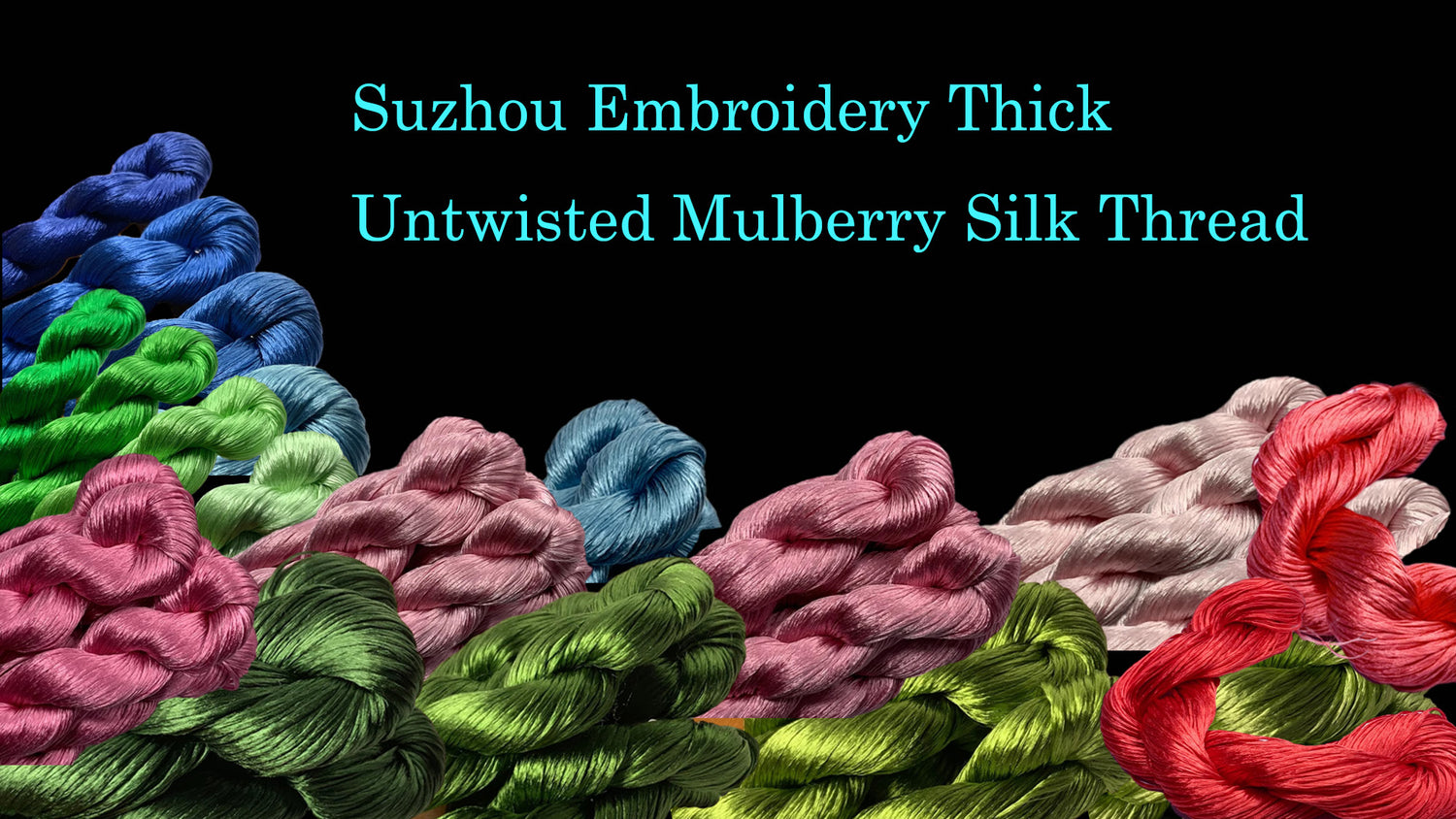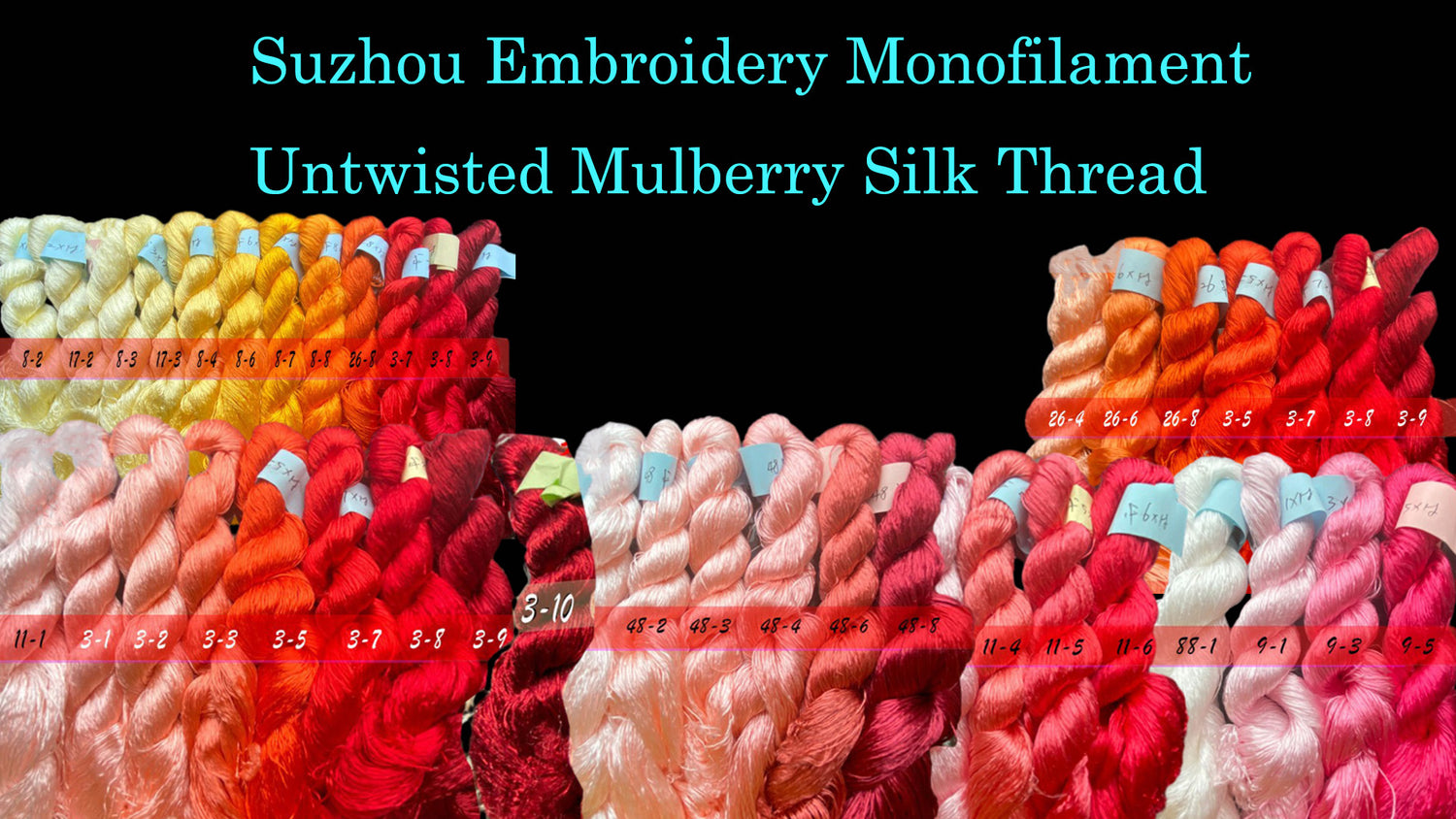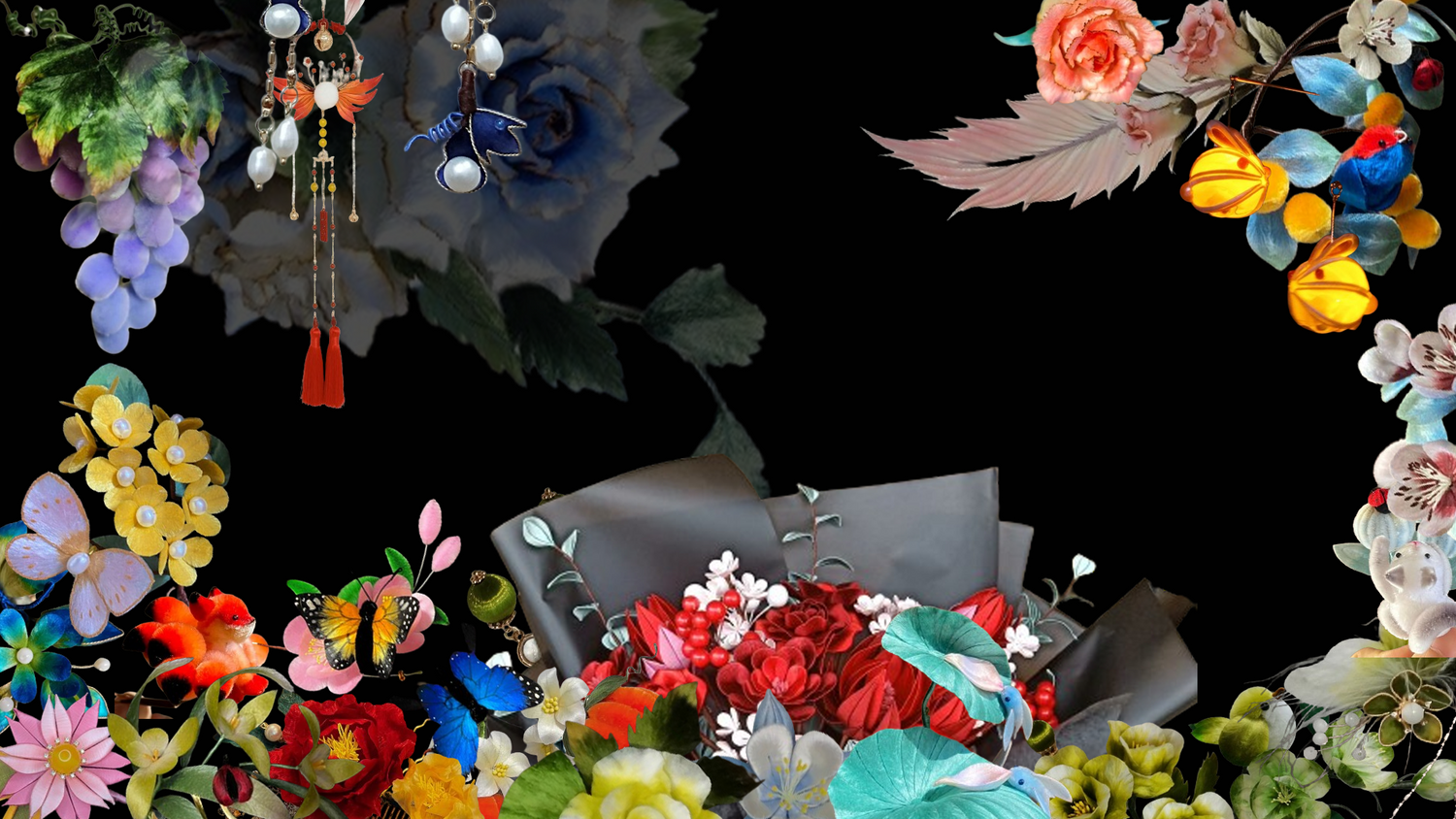
Ink Bamboo Hairpin - Handcraft Ronghua Tutorial
Share
Ancient people loved bamboo and painted bamboo, especially those painted with ink, which embodied the spirit of literati. Famous ink bamboo painters include Wu Daozi of the Tang Dynasty, Wen Tong of the Northern Song Dynasty, and Zheng Banqiao of the Qing Dynasty. This case study uses "ink bamboo" as the creative element for a Ronghua hair accessory, designing a flat-shaped hairpin.
A. Preparing Velvet Strips
 1
1
1. Prepare the velvet strips. In this case, the ink bamboo leaves are entirely black with white tips. To save time on tying threads, you can create a gradient effect with white in the middle and black on both sides when tying the threads. Make one side more white for a more pronounced gradient effect, and gradually transition on the other side. This way, you can create bamboo leaves of two lengths and two effects.
 2
2
2. Cut the velvet and make velvet strips.
B. Trimming and Shaping Velvet
 Process of changing the shape of the velvet strips to resemble bamboo leaves
Process of changing the shape of the velvet strips to resemble bamboo leaves
3. Trim both ends of the velvet strips appropriately. Then, cut the strips from the lightest middle part into one long and one short piece. Use a flat iron to flatten the velvet strips, brush them with setting liquid, and let them dry for later use.
C. Making Bamboo Branches
 4
4
4. Trim the velvet strips into various sizes of bamboo leaves. Use a flat iron to create a slightly curved arc for a natural bamboo leaf effect. If the bamboo leaves are not symmetrical, use a bamboo leaf-shaped template to trim them. Then, make three small black branches, 5-10mm long, using black silk thread and 0.4mm copper wire (refer to Chapter 2 for the method). Use one copper wire for two branches and two copper wires for one branch. Prepare four bamboo leaves and three small branches to make the bamboo branch.
 5
5
5. Use black silk thread to tie the three bamboo leaves together, ensuring there is some space between each leaf, and each leaf faces a different direction. After tying the leaves, continue wrapping the thread around the copper wire, then knot and finish.
 6
6
6. Next, fix the bamboo leaves and small branches. Take the small branch made with two copper wires, fix it together with the remaining bamboo leaf, and wrap it with thread. Then, add the components assembled in the previous step at the appropriate position and add a small branch segment to imitate the growth pattern of the bamboo branch.
 7
7
7. Continue wrapping the thread and add another small branch to the bamboo branch. Knot and finish. The final effect of the bamboo branch is as shown in the picture above. Using the same method, make three bamboo branches in total.
D. Making Decorative Components
 8
8
8. Take three copper wires and wrap a section of black silk thread around the middle of the three wires. Group them into two sets.
 9
9
9. Take the prepared copper accessories and wrap the copper wires with silk thread around the fixing point of the copper accessory to secure it firmly (the number of wraps depends on the size of the copper accessory). Then, wrap the thread around the copper wire to secure it. If you worry that the copper accessory is not securely fixed to the copper wire, apply white glue to the fixing point.
E. Assembly
 10
10
10. Prepare all components and place them in the desired position for the final product.
 11
11
11. Secure all components and adjust their position and shape during the fixing process for the best final effect.
 12
12
12. Cut off the excess brass wire and fix it on the hairpin, then finish the ends. The production is complete.
 13
13
13. Display the finished product.








